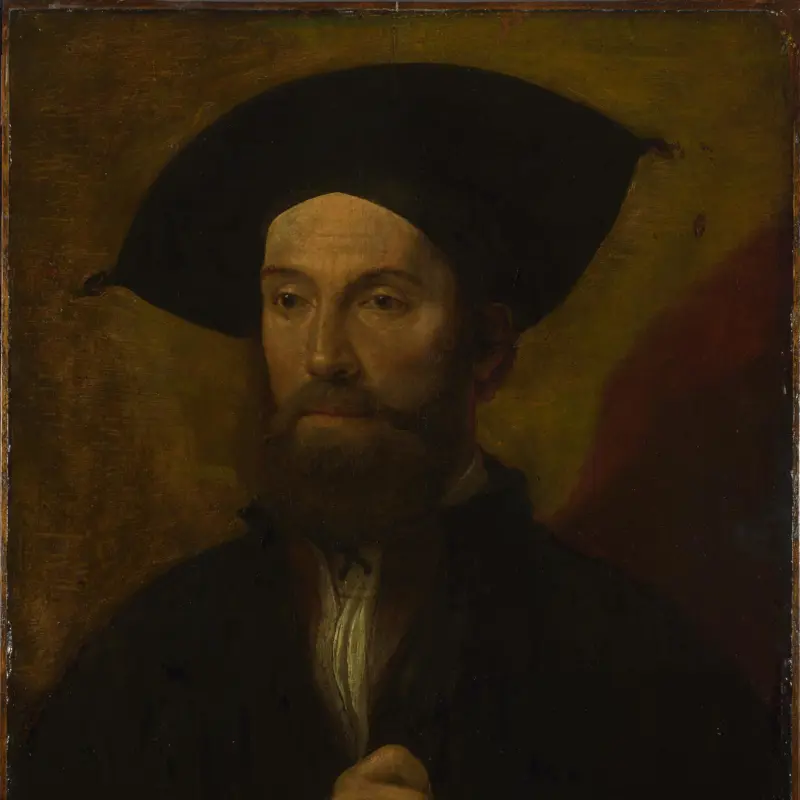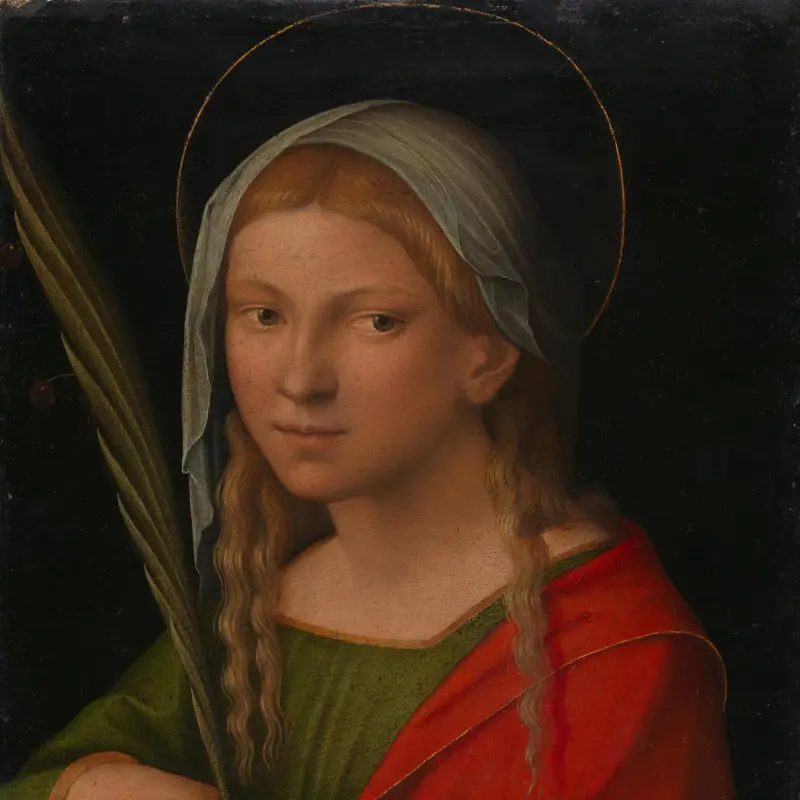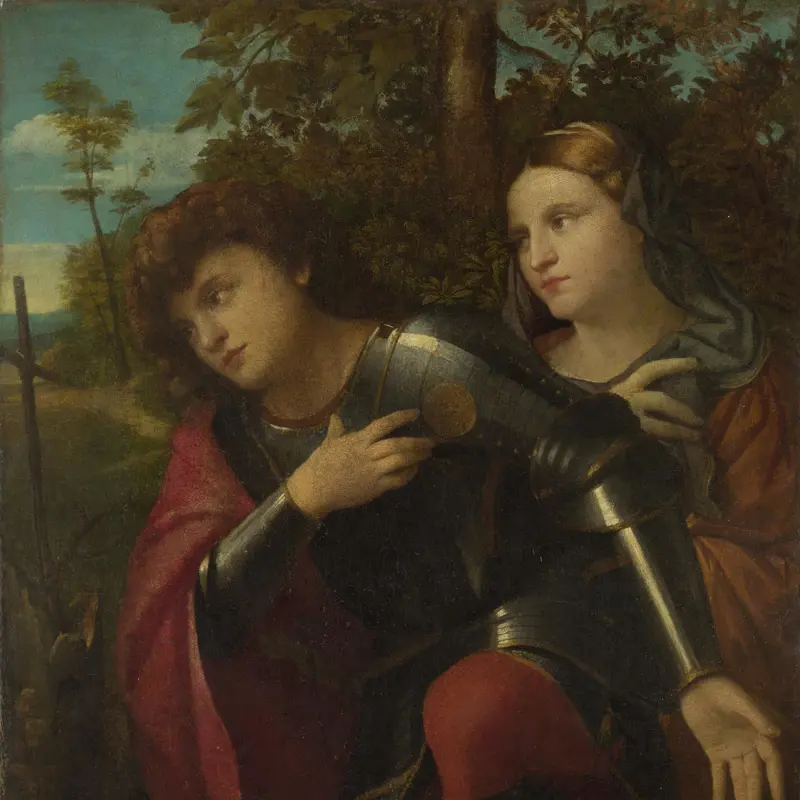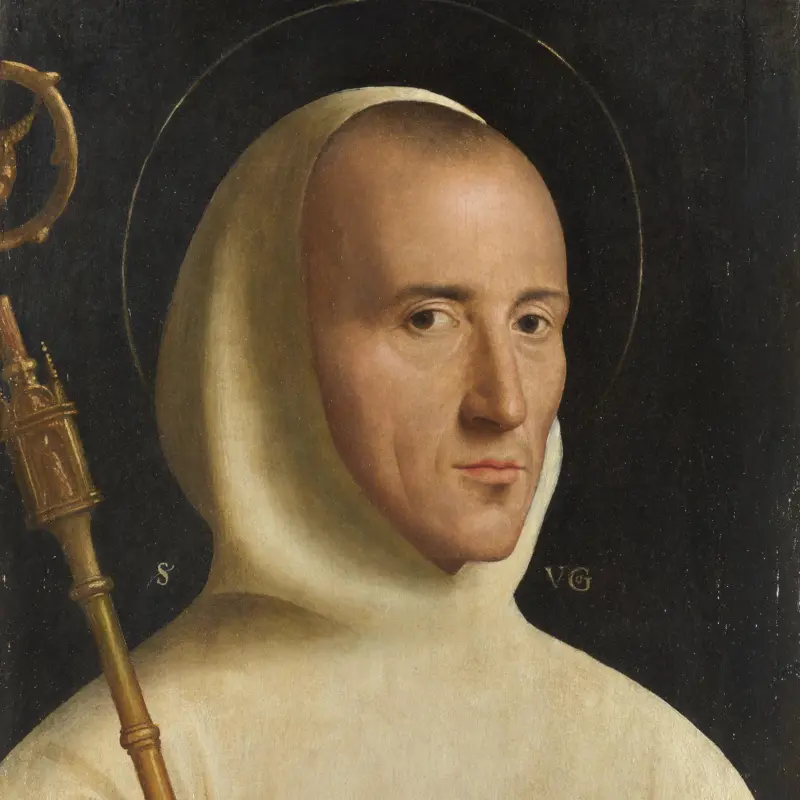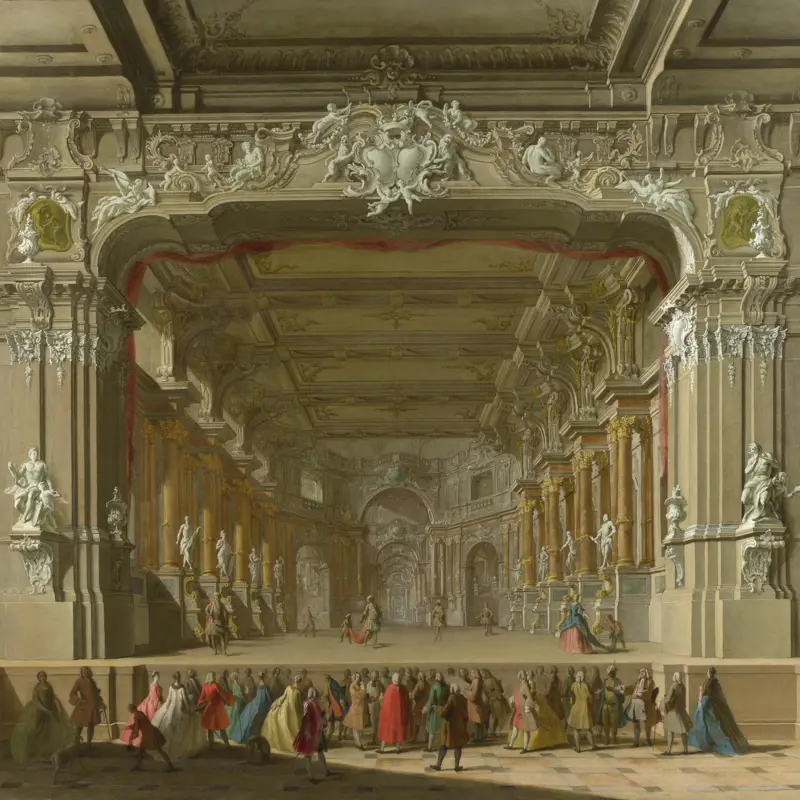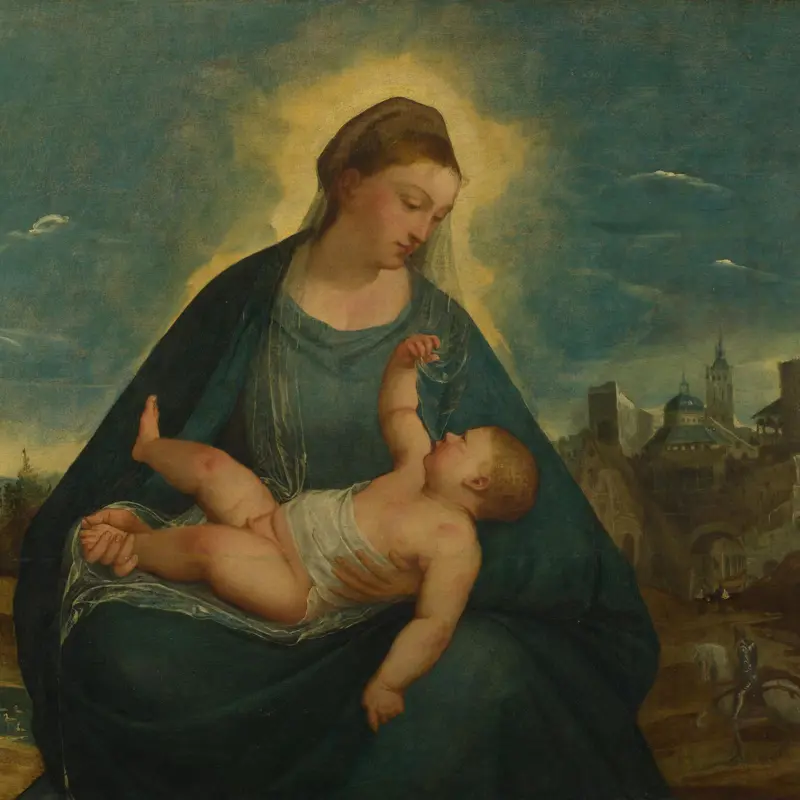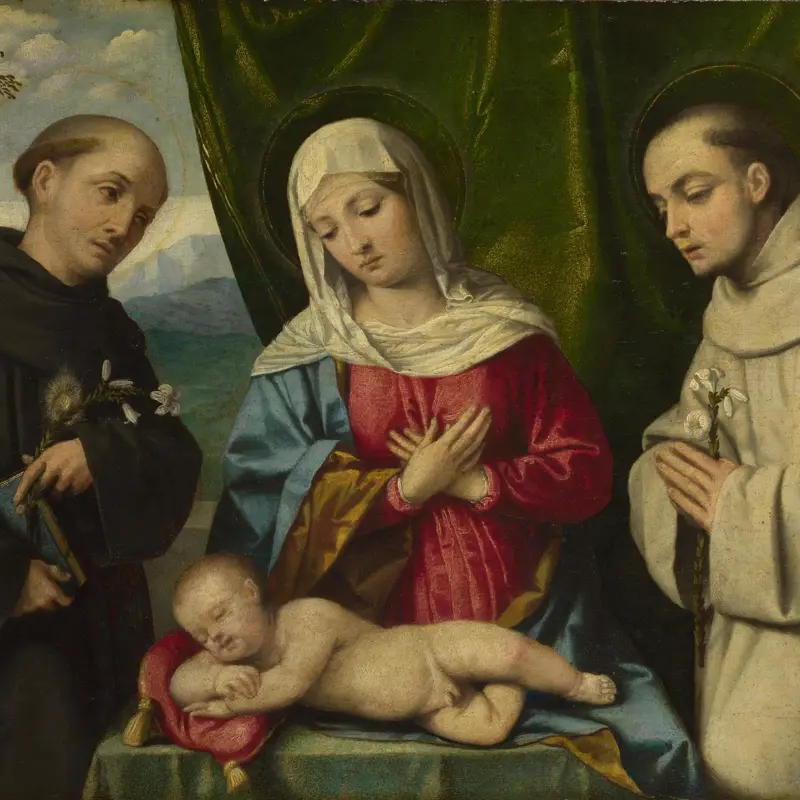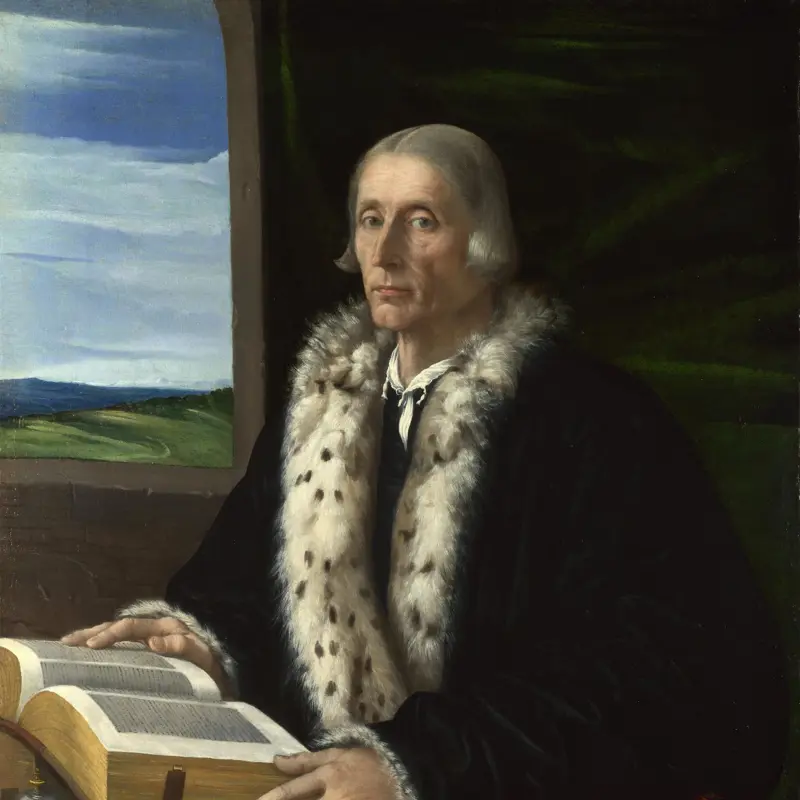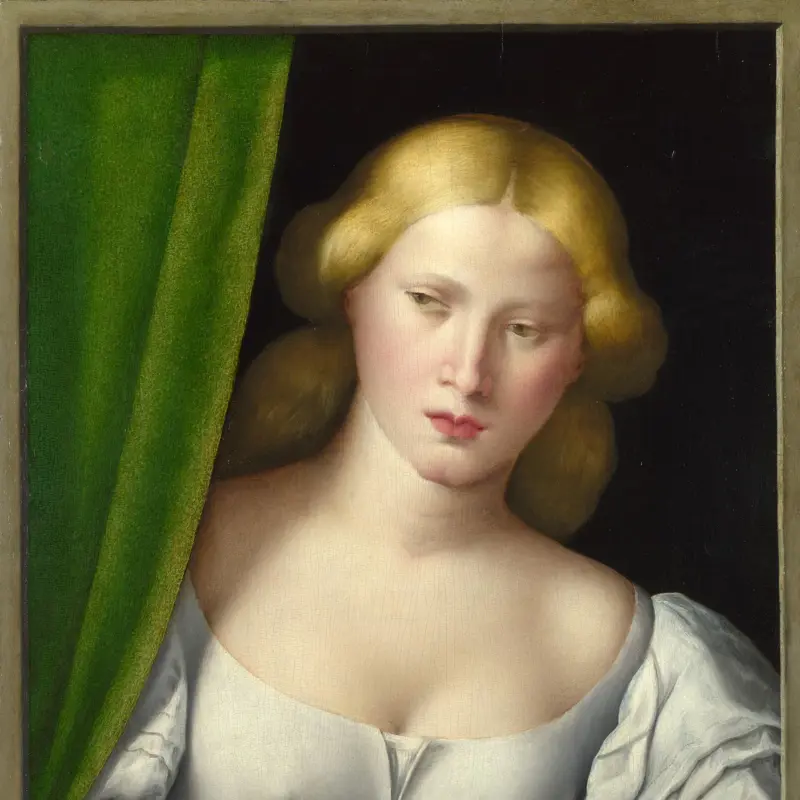Italian, North, 'A Man holding an Armless Statuette', before 1640
About the work
Overview
An ageing bearded man looks out of the painting, holding a statuette in his left hand. He is painted within an oval fictive stone frame and the statuette emerges from the painted space into our own, making the sitter seem all the more lifelike. The statuette indicates that the man represented here may be a sculptor or a collector – there are no other clues as to his identity.
The identity of the painter remains a mystery. The work entered the National Gallery’s collection as by the Genoese painter Bernardo Strozzi, an attribution that has been proposed again more recently. The picture is certainly Italian and has been associated with both Genoese and Venetian painters, on account of its loose brushwork and fluid handling of the paint.
Key facts
Details
- Full title
- A Man holding an Armless Statuette
- Artist
- Italian, North
- Date made
- before 1640
- Medium and support
- oil on canvas
- Dimensions
- 75.8 × 63.5 cm
- Acquisition credit
- Presented by F.D. Lycett Green through the Art Fund, 1929
- Inventory number
- NG4459
- Location
- Not on display
- Collection
- Main Collection
Provenance
Additional information
Text extracted from the ‘Provenance’ section of the catalogue entry in Michael Levey, ‘National Gallery Catalogues: The Seventeenth and Eighteenth Century Italian Schools’, London 1986; for further information, see the full catalogue entry.
Exhibition history
-
2015Sacred Spaces: The Lycett Green CollectionYork Art Gallery1 August 2015 - 6 March 2016
Bibliography
-
1922N. Tarchiani, Mostra della pittura italiana del Seicento e del Settecento (exh. cat. Palazzo Pitti, 1922), Florence 1922
-
1924Magnasco Society, The Magnasco Society: Catalogue of a Loan Exhibition of Italian Pictures of the XVII and XVIII Centuries (exh. cat. Agnew’s (Thos. Agnew & Sons Ltd), 1924), London 1924
-
1930London, National Gallery Archive: National Gallery Trafalgar Square and Millbank Directors' Reports 1929, 1930
-
1939National Gallery, National Gallery, Trafalgar Square: Supplement to the 1929 Catalogue including Accessions to the End of 1937, London 1939
-
1958The National Gallery, The National Gallery: July 1956 - June 1958, London 1958
-
1966L. Mortari, Bernardo Strozzi, Rome 1966
-
1971M. Levey, The Seventeenth and Eighteenth Century Italian Schools, London 1971
-
1986Levey, Michael, National Gallery Catalogues: The Seventeenth and Eighteenth Century Italian Schools, London 1986
-
2001
C. Baker and T. Henry, The National Gallery: Complete Illustrated Catalogue, London 2001
About this record
If you know more about this work or have spotted an error, please contact us. Please note that exhibition histories are listed from 2009 onwards. Bibliographies may not be complete; more comprehensive information is available in the National Gallery Library.



